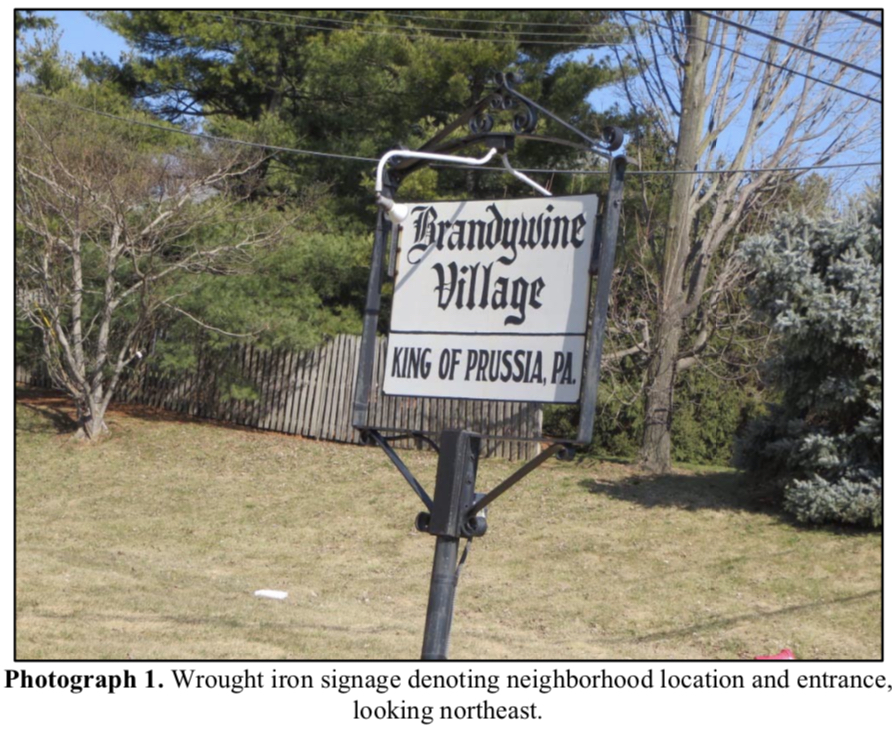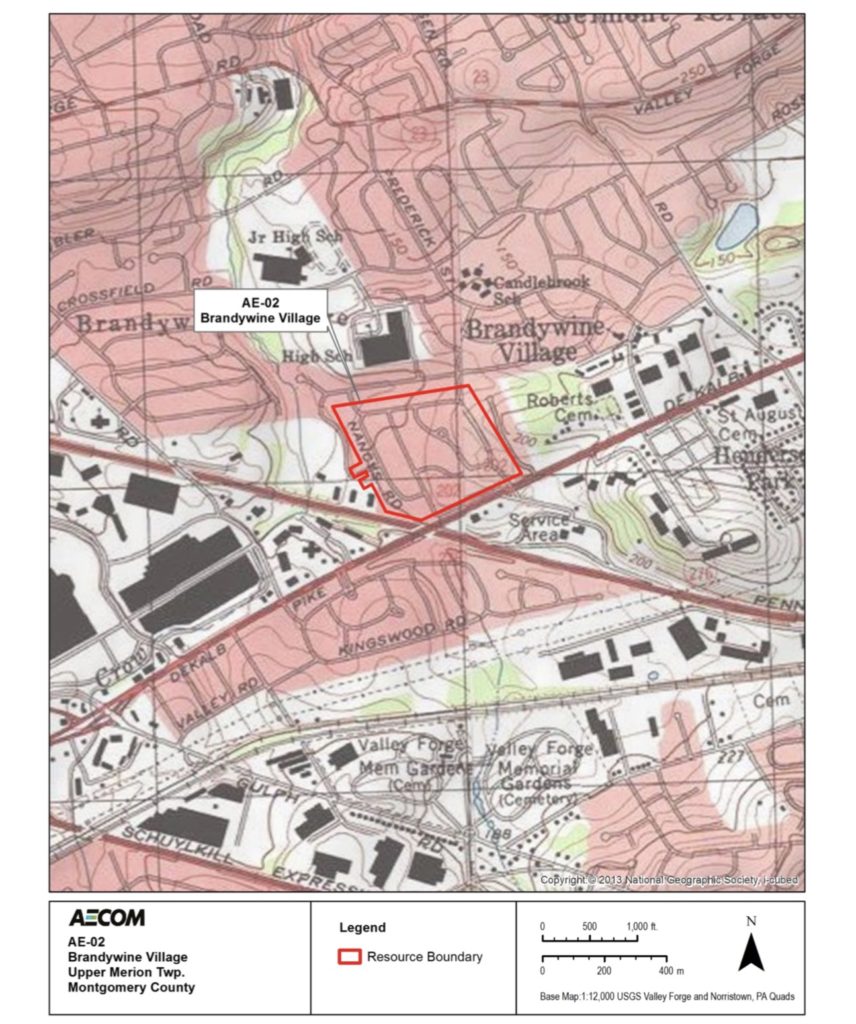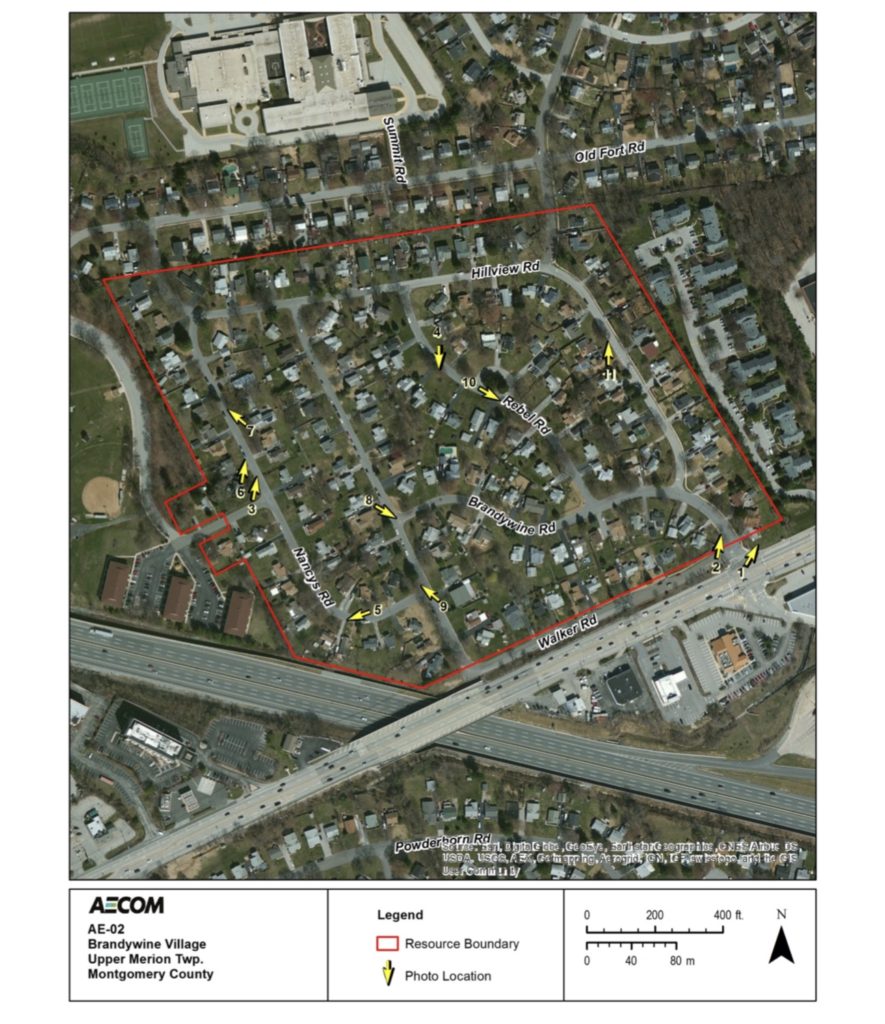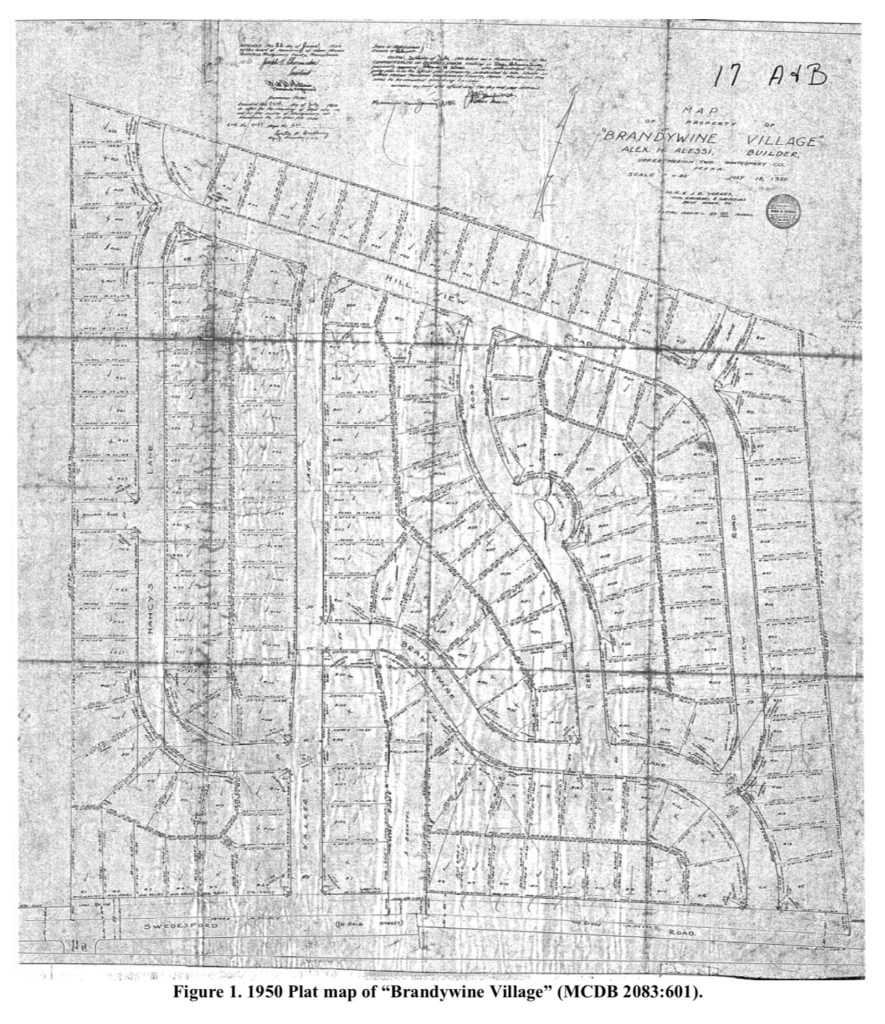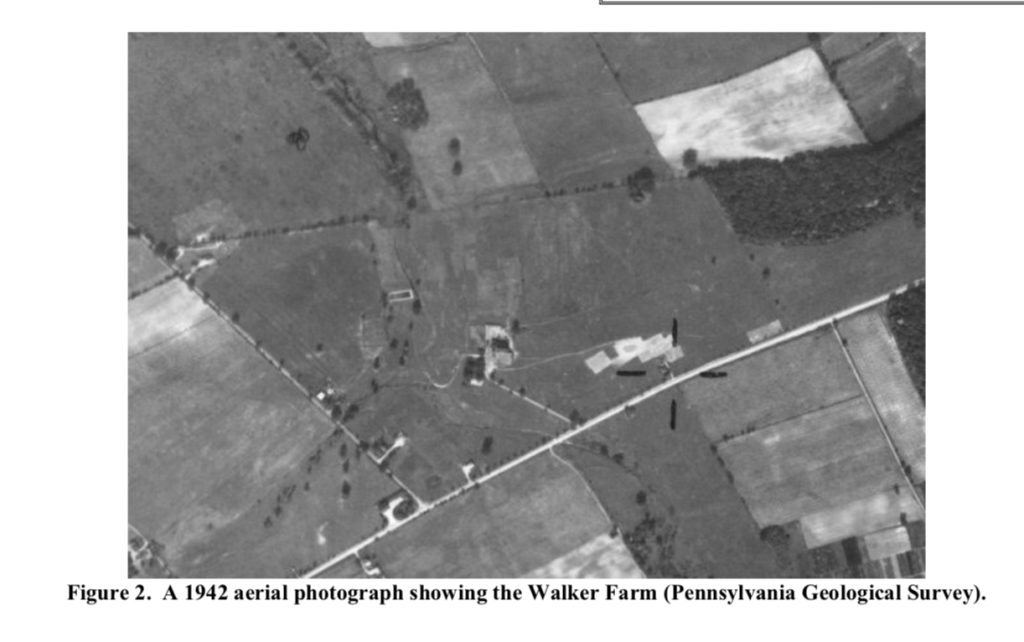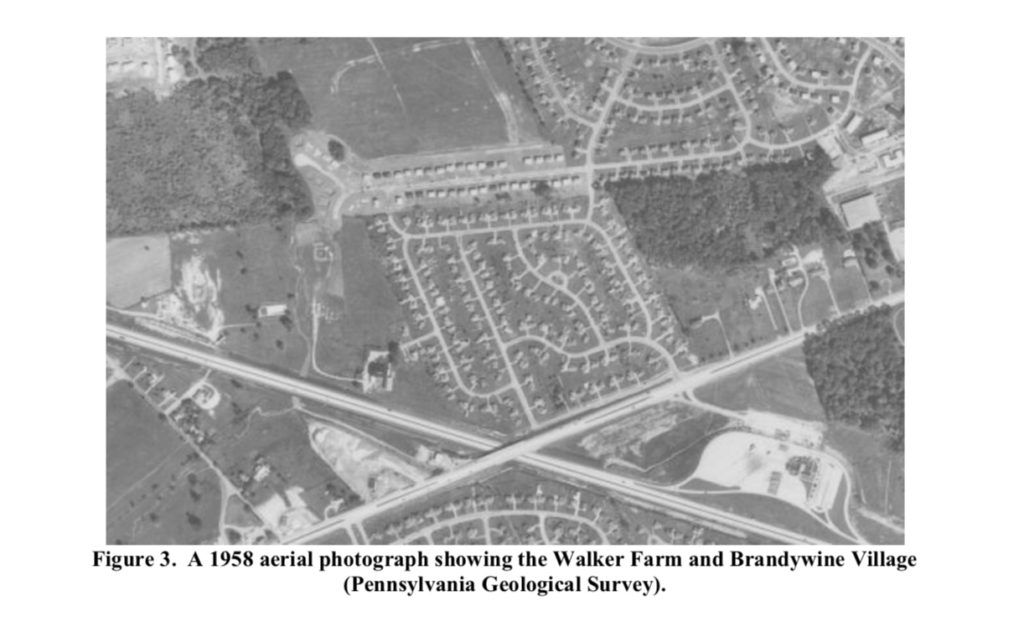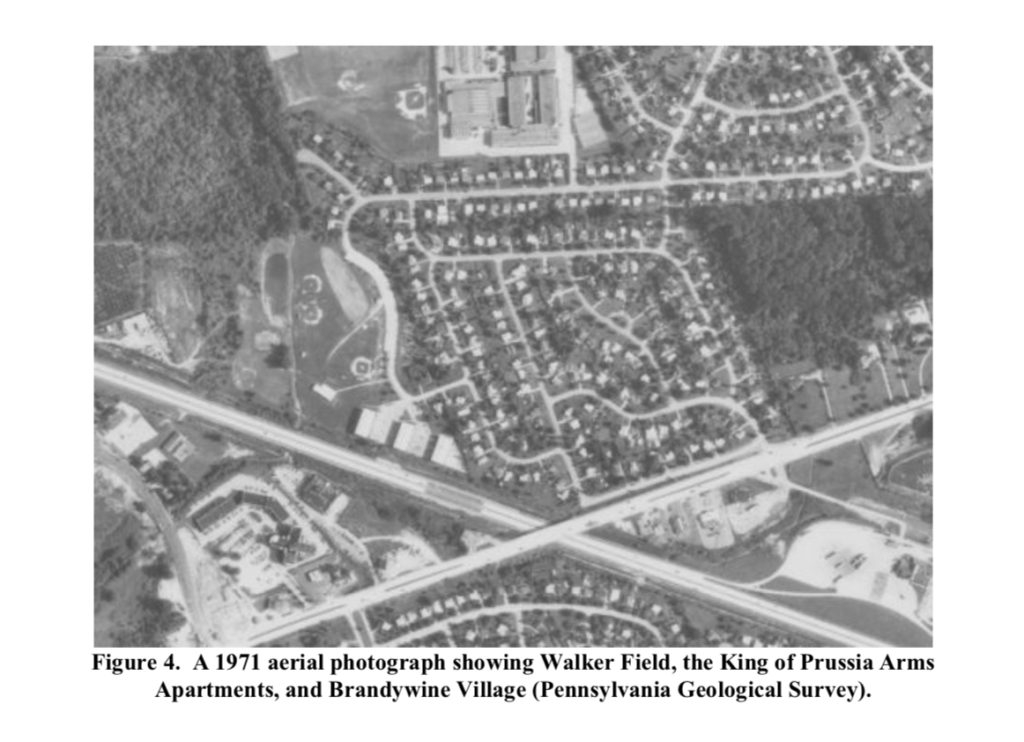An excerpt from the KOP Rail Draft Environmental Impact Statement released in October 2017.
Brandywine Village is a mid-twentieth-century, sprawling, middle-class residential subdivision of detached single-family dwellings, located immediately northeast of the commercialized area of King of Prussia. The entire development is bounded by U.S. Route 202 (DeKalb Pike) to the southeast, Henderson Road to the northeast, State Route 23 to the northwest, and the Pennsylvania Turnpike (Interstate 276) to the southwest. Housing and commercial developments are located to the east, and an adjacent single-family subdivision called Candlewood [sic] abuts Brandywine Village on the north. Along the western side of the southernmost section of the neighborhood, to the north side of the Pennsylvania Turnpike, is a community park, Walker Field, owned and maintained by Upper Merion Township’s Parks and Recreational Department. The park consists of 25.03 acres of outdoor recreational space, including four baseball fields, one lighted football field, a community building, a lighted basketball court, playground, monument, stream and open space. This park is accessed via the Brandywine Village development (at Williams and Old Fort Roads). Immediately southeast of the park stands the King of Prussia Arms Apartments, a complex of three circa- 1962 low-rise garden apartment buildings.
….As one of the first of several adjacent residential subdivisions in the vicinity, Brandywine Village was part of the explosive residential and commercial development that transformed King of Prussia in the second half of the twentieth century. The farmland surrounding it at the time of construction disappeared almost immediately, and the extant adjacent post-1950 residential and commercial development formed the subdivision’s surroundings throughout most of its existence….
The postwar housing boom, manifested in the so-called “freeway” or “bedroom” suburbs, was fueled by increased automobile ownership, advances in building technology, and the Baby Boom. A critical shortage of housing and the availability of low-cost, long-term mortgages, especially favorable to veterans, greatly spurred the increase of home ownership.
…The land where Brandywine Village and the Valley Forge Shopping Center now stand was once owned by William Walker. William (Billy) Walker, a longtime resident of Upper Merion, was in the butcher business. Around 1910, he and Fred Anderson started working together, driving cattle around, butchering a little bit, and eventually going into the hide and tallow business. They picked up dead animals around the countryside, processed them, and sold the tallow, suet, and hides. By 1918 Billy had saved up enough money to buy a one hundred and fifty-two acre farm of his own. He paid one hundred and fifty dollars an acre shortly after the First World War.
At the time Mr. Walker purchased the farm its location was identified as a white residential and farm section. Over a period of a few years many of the acres would be subdivided and developed into building lots. Shortly after the Second World War, a northeast section of the farm was sold off and became what is now Brandywine Village. Billy sold forty acres at $1,000.00 an acre. This development consisted of 175 homes built ca. 1950-1952….
The 1950 plat map record on file on the Montgomery County Courthouse for this development noted the approval and recordation of the deed and plan to “Brandywine Village” by Alex H. Alessi, Builder. M.R. and J. B. Yerkes were the civil engineers and surveyors for the 43-acre neighborhood. There were five streets, noted between 50-60 feet wide, and two undeveloped roadways that ended at the edge of the subdivision and led to nowhere at the time of this development. The fully developed thoroughfares included Hill View [sic] and Rebel Roads, Rebel Circle, and Brandywine, Walker, and Nancy’s Lanes. The two undeveloped roadways were William (now Williams) Road and Country Lane. From field observation, it appears the builder erected four different forms of the Minimal Traditional style dwelling.
KOP Architecture Survey Appendix B – Pennsylvania Historic Resource Survey Forms – Brandywine Village (Survey#AE-02) prepared April 2016, pp 5-20
Read the full report here -> http://www.kingofprussiarail.com/…/KOP_Architecture_Survey_…

